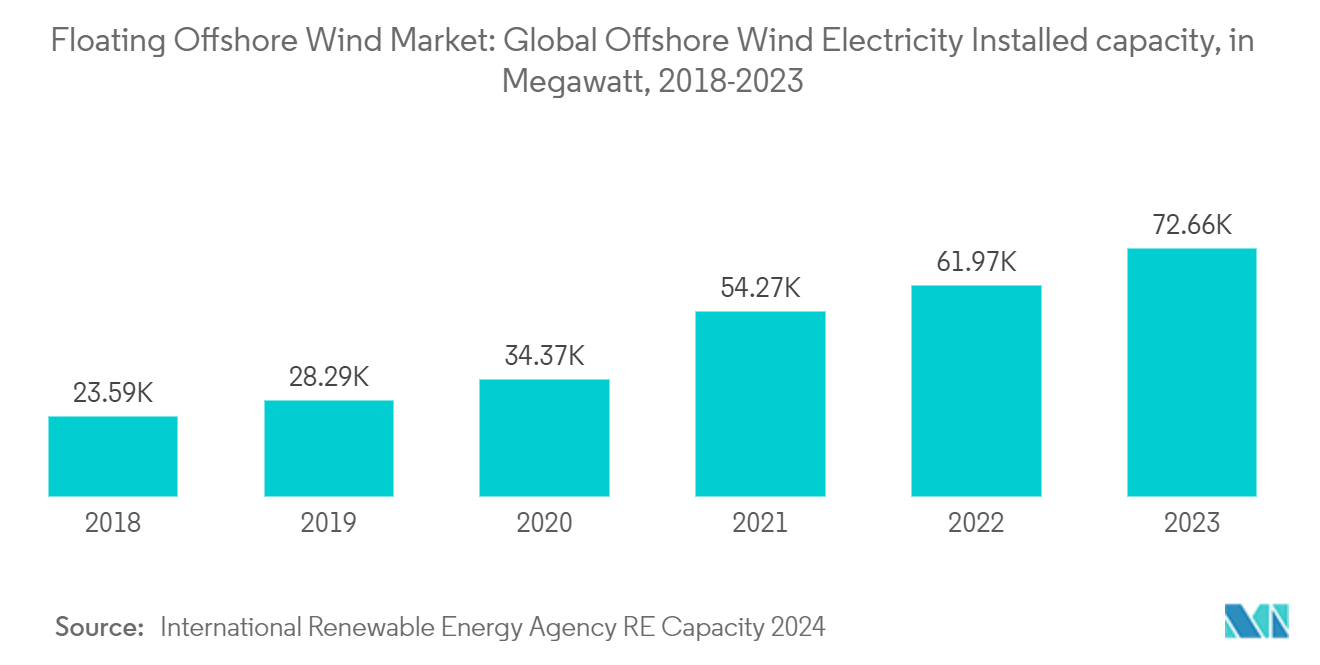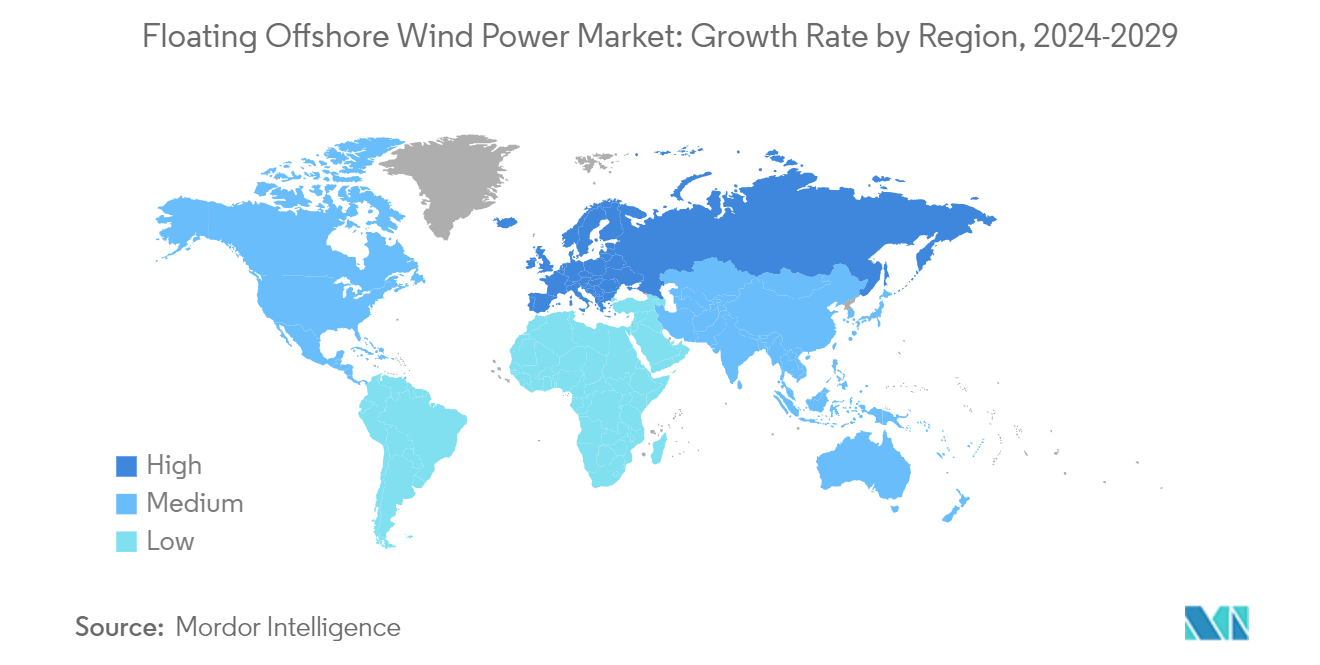Market Trends of Floating Offshore Wind Power Industry
The Transitional Water (30 m to 60 m depth) Segment is Expected to Grow
- Due to the greater water depth and favorable project economics, floating offshore wind turbine (FOWT) technology is more developed in transitional water depths (30-60 meters). The barge variant is the most commercially viable floating wind turbine design at shallow depths. This model is appropriate for activities higher than 30 meters (m) and has the shallowest draft of any floating foundation.
- Barge-style floating wind turbines have a square footprint, while other designs incorporate a moonpool to lessen stresses brought on by wave-induced loads. According to GWEC, a typical 6-megawatt floating barge wind turbine weighs between 2,000 and 8,000 tons. However, BW Ideol, with its Damping Pool Barge Floating Substructure Technology, is the only company that has deployed barge-type FOWT at the MW scale.
- Since the water depth is shallower, FOWT technology is less practical from a business point of view than fixed-base technology. During the forecast period, barge technology is expected to make up a small part of the FOWT market. According to the US EPA, only 5 MW of barge FOWT capacity operated globally as of 2021. Around 1,932 MW of FOWT capacity on barges, or 2.1% of all announced offshore wind substructure technologies for future projects worldwide, was announced.
- Most companies attempt to market FOWT designs that can be used in deeper waters. However, some semi-submersible technologies can also be used at transitional water depths. They can function at transitional depths due to several commercial FOWT models that are built on the semi-submersible design. A few of these models were initially used in experimental projects, while others were modified for use in ventures for profit.
- The US Department of Energy’s Wind Energy Technologies Office (WETO) announced on April 24, 2024, that it intended to issue a Notice of Intent involving a USD 48 million funding opportunity for regional and national research and development of offshore wind technologies, including floating offshore wind platform research and development. This promises future growth potential for the market.
- According to the International Renewable Energy Agency RE Capacity 2024, the global installed offshore wind energy capacity increased by 17.26% in FY 2023-24, adding 10,696 MW in 2023 to the earlier installed capacity of 61,967 MW in 2022. Such developments show promising outlooks for the market players in the near future.
- Most of the FOWT projects in transitional depths are likely to be in Europe, especially in the United Kingdom, Scandinavia, and France, where large projects are in the planning stages. During the forecast period, most of the deployments in this segment are likely to happen in these regions.
- Thus, the transitional water (30 m to 60 m depth) segment is expected to grow significantly during the forecast period.

Europe is Expected to Dominate the Market
- Europe holds the largest share of offshore wind energy installations globally. According to the European Union, Europe represents a quarter of global offshore wind installations. The country (primarily North Sea countries) is likely to be at the helm of the offshore wind market.
- Around 85% of offshore wind installations are globally in European waters. The governments, particularly in the North Sea area, have set an ambitious target for installing offshore wind farms in their territorial waters.
- The EolMed project is France's first floating pilot wind farm in the Mediterranean Sea. In May 2022, TotalEnergies announced the start of the project's construction, which is expected to be operational by 2024. The project consists of three 10 MW floating turbines on the bathymetry of the 62-meter depth and anchored to the seabed. The turbines will use a barge design with a damping pool.
- According to the International Renewable Energy Agency RE Capacity 2024, the installed offshore wind energy capacity in Europe increased by 9.58% in FY 2023-24, adding 2,830 MW in 2023 to the earlier installed capacity of 29,539 MW in 2022. Such developments show promising outlooks for the market players in the near future.
- In August 2023, the world’s largest floating wind farm, the Hywind Tampen Project, started operating around 140 kilometers off the coast of Norway in depths ranging from 270 to 310 meters. Hywind Tampen uses 11 floating wind turbines and has a system capacity of 88 MW. It helps power operations at offshore oil and gas platforms.
- During the forecast period, these trends should make Europe a great place to do business for players involved in floating offshore wind farms.


